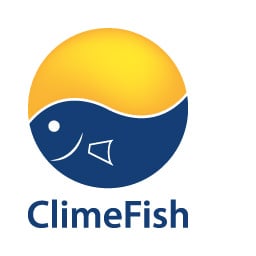Climate change and impacts on fisheries
The links between fisheries and their ecosystems are deeper and more significant than those that exist in common agriculture.
The rising ocean temperature and increased acidity makes it more difficult for marine organisms such as shrimps, oysters, or corals to form their shells – a process known as calcification. Many important animals, such as zooplankton, that forms the base of the marine food chain also have calcium shells. The entire marine food web is being altered, and may result in ‘cracks in the food chain’. As a result, the distribution, productivity, and species composition of global fish production is changing, generating complex and inter-related impacts on oceans, estuaries and sea grass beds that provide habitats and nursery areas for fish.
Pelagic fish stocks exhibit unique spatial and temporal distribution patterns related to their bioclimatic niche. Climate changes and the associated shifts in primary and secondary production have therefore impact on the distribution range, migratory habits and stock size of many marine fish species. However, few are affected as dramatically as the straddling pelagic stocks – like herring, mackerel, capelin, blue whiting, sprat, anchovy and sardine. They provide an interesting showcase of extreme changes where climate induced fluctuations affect important biological processes such as reproductive success, population dynamics, migration patterns and interactions between fish populations. The most notable effect of climate change will be the poleward expansion.
Read more in the ClimeFish Virtual Fact Sheets:
Some species will also shift away from shallow coastal waters and semi-enclosed areas, where temperatures will increase fastest, into deeper cooler waters. In general, fish tend to live near their tolerance limits of a range of factors, and as a result, increased temperature and acidity, lower dissolved oxygen and changes to salinity may have deleterious effects on their populations.
In the Baltic Sea, fish stocks are particularly sensitive for changes in climate and environment due to brackish water conditions and large variations in salinity and temperature. During the last forty years there has been a substantial warming in the Barents Sea, with the bottom temperature rising by approximately 1°C in the last decade alone. Sea ice in this region is retreating and sub-zero water masses in late summer have almost disappeared. As a result, boreal (warm-water affinity) species, such as cod, have moved northward, entering areas previously dominated by Arctic fish species.
A poleward expansion of haddock, and a north-eastward displacement of beaked redfish have also been documented. It is anticipated that this poleward expansion could result in the local extinction of some arctic fish species, such as the Polar cod. In addition to the change in fish species distribution, invasive species and extinction, a decline in fish body size and lower impact of fish stock recruitment (amount of young fish produced each year) are changes seen when sea temperatures increase. It is thus clear that there is potential for significant changes in species abundance and composition that could affect the whole ecosystem and the fisheries that rely on it.
Climate change effects, such as increased sea temperature and current flows, will bring shifts in the distribution of marine fish stocks, with some areas benefiting while others lose out. These changes are being explored in the ClimeFish project, which will evaluate changes in fish species distributions and stock dynamics, impacts on fish stock recruitments (measured as the amount of young fish produced each year) and evaluate the impact of non-indigenous species, present due to climate change.
You can read more about the cases in ClimeFish Marine Fishery sector here:
C1F – North East Atlantic, including species like herring, mackerel, anchovy and sardine
C2F -Baltic Sea, including species like herring and sprat
C3F – Baltic Sea, including species like cod
C4F – Barents Sea, including species like cod and haddock
C5F – West of Scotland, including species like hake and cod
C6F – Adriatic Sea, including species like hake

